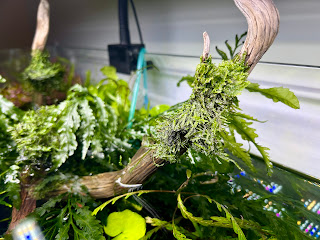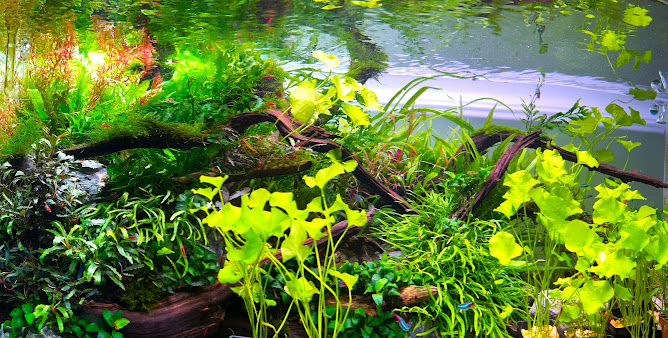Optimizing Water Changes: How to Manage GH/KH for a Stable Aquarium
Maintaining stable General Hardness (GH) and Carbonate Hardness (KH) is important for a thriving aquarium. Regular water changes are the primary tool for managing mineral accumulation and maintaining balance, but the type of water used for those changes plays a key role. This article focuses on optimizing water changes using soft water or water that closely matches your aquarium's current parameters. We assume you are already familiar with the concepts of soft and hard water. For reference, soft water is generally considered to have a GH of less than 4 °dH.
Addressing Higher Than Desired Hardness with Gradual Reduction
Should testing reveal general hardness (GH) and carbonate hardness (KH) levels exceeding your target, especially if regular testing has been absent, water changes with softer water offer a suitable method for gradual adjustment. While higher hardness may not present an immediate issue for all species, achieving the intended parameters often remains the goal.
Importantly, rapid decreases in hardness can be stressful to aquarium inhabitants. Thus, a phased approach is recommended: initiate water changes using noticeably softer water, but begin with smaller, more frequent volumes—for example, several 10-15% changes over a day or two for a week or more may be required—instead of a single large alteration. This measured dilution with softer water facilitates a controlled reduction of GH/KH, limiting potential stress from abrupt shifts while effectively working to adjust hardness to the desired range.
Weekly Maintenance Using Matched Water
Using water, having the same GH/KH as your aquarium, minimizes immediate fluctuations caused by the water change itself and avoids directly adding to GH/KH creep from the water change. However, it does not prevent GH/KH from rising due to other factors (substrate, hardscape, fish food, waste). Therefore, using matched water for weekly changes is excellent for minimizing water parameter swings during routine maintenance but it's important to understand that it is not a solution for the inevitable, gradual increase in hardness that occurs in most aquariums over time.
Addressing Routine Hardness Increase with Softer Water
Despite weekly maintenance, general hardness (GH) and carbonate hardness (KH) will likely still exhibit a routine increase. When this occurs, realize that water changes with water matching your target hardness are insufficient to reverse this upward trend; they primarily serve to maintain the existing, potentially elevated, hardness level.
To actively reduce and manage this routine hardness creep, a key strategy emerges: proactively use replacement water that is significantly softer than your aquarium water and even softer than your desired target hardness. This approach of diluting with softer water weekly, becomes the fundamental method for systematically lowering and maintaining your aquarium's GH to your desired hardness.
This table demonstrates that once your aquarium water reaches a certain hardness, (in this table 8 °dH is the threshold where no mineralizing powder needs to be used) water changes with water at your target hardness will no longer be sufficient to reduce hardness.
Aquarium Water Change Hardness Guide (Target ≥ 6 °dH)
Other Methods
While soft water and exactly matched water strategies are usually sufficient, other methods exist. RO/DI water can rapidly reduce GH/KH but requires extreme caution due to the risk of rapid and potentially large pH swings. Because it lacks buffering capacity, even small additions of acids or bases can drastically alter pH. It is generally not recommended for routine management. Other methods, such as water softening resins or peat filtration, are beyond this article's scope.
The Importance of Testing
Regular GH/KH testing is essential. It allows you to monitor trends, adjust your strategy, and detect potential issues early. Don't rely on guesswork.
Frequency and Volume
Smaller, more frequent water changes are generally preferable, especially when adjusting GH/KH. Regular testing is crucial to fine-tune your approach and determine whether you need gradual reduction, maintenance, or weekly reduction to counteract creep. Adapting your water change strategy based on testing results—as described above—is the most important takeaway from this article.
Conclusion
Let me share a crucial lesson I learned about water changes the hard way: avoid the tempting routine of always mineralizing holding tank water to match your target aquarium hardness. While it seems intuitive, this practice actually hindered my ability to manage hardness effectively. By consistently adding water already at the target level, I inadvertently created a system where hardness could only creep upwards, never downwards.
This rigid approach, coupled with neglecting regular GH/KH tests, led to a shock – discovering my aquarium at 14 °dh!
The key takeaway, for all of us, is the power of flexible water change preparation. My current approach is now simpler: I prepare holding tank water by just dechlorinating and warming it. Mineralization is now a strategic choice, only implemented when a guide (like the one we discussed) indicates it’s truly needed. This gives us options: soft water top-offs for subtle adjustments and the deliberate selection of soft or mineralized water changes each week.
Don't fall into the trap of constant pre-mineralization; it removes this vital control. Remember, minerals are persistent – they aren't used up and gone every week. Provided you've used a good mineralizing powder periodically, routine mineralization of every single water change is usually overkill. Instead, consider targeted re-mineralization of your aquarium water only when tests confirm hardness has actually dropped below where you want it.
Up Next: Target Mineralization of Your Tap Water, I'll provide a practical, step-by-step guide to remineralizing soft tap water to create the ideal mineral balance for your aquarium, including helpful dosing guidelines and a reliable add-and-test method.

.jpg)
.jpg)
Comments